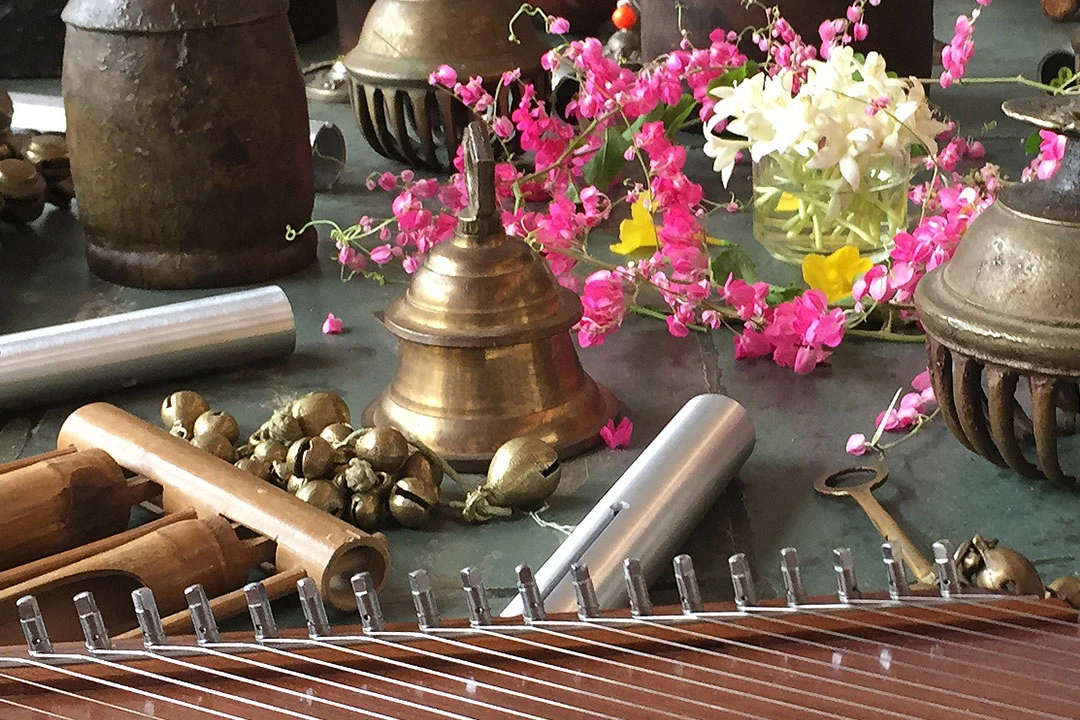
Music Ethnology & Indian Heritage
Organology – The science of musical instruments, their evolution, materials and form, structure and principles common across all cultures and in varied unique expressions of the peoples of the world offers a beautiful spectrum of the diversity of human cultures which is simultaneously based on common universal principles of acoustics and human ingenuity and creativity. SVARAM is involved in ongoing studies and exchanges with national institutions and international experts in the field of Organology and is currently making a survey of existing Instrument collections in India. Collaborations with instrument makers are continuing to inspire the SVARAM artisans and bring new insights and fresh impetus into the exploratory work.
Through its rich diversity in the folk tradition – between Himalayan Mountains, river valleys and deltas, deserts and plains and the southern tropical and coastal regions – India harbours amongst the nations one of the richest heritage cultures in musical instruments. Due to fast modernization and the loss of natural resources and habitat many of the cultural treasures of the indigenous people are fast disappearing and with it the intangible heritage of specialized skills. Even the classical tradition, while more established and transmitted through generations, suffers great losses in the ancient art and knowledge of musical instrument craft. Historically and to date the skills have been passed on through family lineages, small scale handicraft units and specialized guilds and casts.
Utilizing the ancient Indian classification of musical instruments as a reference, the beginnings of human sound production is explored and its archetypes identified globally throughout original cultures, for an application in the fundamentals of music pedagogy, -therapy and personal growth work. Based on the qualities of different materials (stone, clay, wood, bamboo, reed, metal, glass, animal hides …) and the diverse ways of sound production (winds, solids, strings, skins and voice) with a symbolic correlation to the elements (air, fire, water, earth and ether) a simple yet richly variable framework is set for creative encounter with and deepening research of the uniquely human faculty of musical expression and its means, instruments and their applications.

